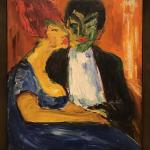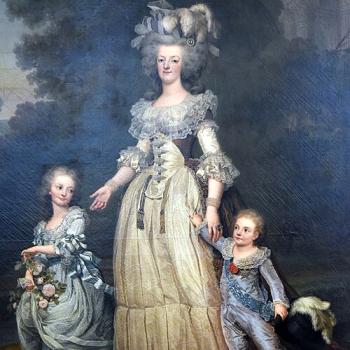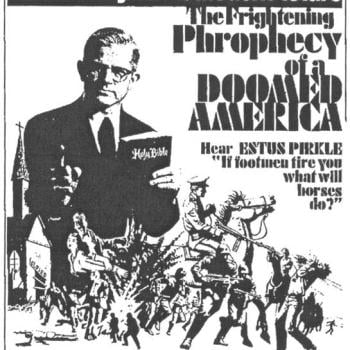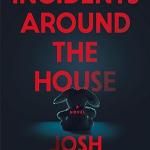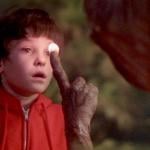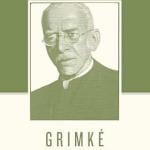
Source: Flickr user Gandalf’s Gallery
License
Way back in the early 2010s, when the world was coming to terms with the epidemic of sexual assault on college campuses, Slavoj Žižek told a joke. I wish I could share the clip, but among countless YouTube videos from channels called “I WOULD PREFER NOT TO” and “The Based Bureaucrat,” I have been unable to locate one. Let me relay it from memory in my own voice.
“As our understanding of what constitutes assault changes, so will our ways of being flirtatious. No longer will it be funny or acceptable to be aggressive or bold. But, of course, young people won’t give up on all sex. And so, they will turn consent into a little game. ‘May I touch your left shoulder?’ “How about if I touch your thigh now?’ ‘Are you sure?’ In this way, the request for consent will become, paradoxically, both a laughingstock and the ultimate expression of flirtation. We will obey the boundary by transgressing it and transgress it by obeying it.”
As Josh Ruben’s Heart Eyes (2025) washed over me, I could not shake Žižek’s remark. The film is an oddity, a mishmash that reflects what I imagine are its three writers’ competing hobby horses. One of these is clearly the world after Trump after Biden after Trump, which is to say, a universe in which characters in a mainstream movie can joke about gender neutral bathrooms in a non-culture war, non-offensive way. Is such possible? I will leave that for future generations to decide. I remain too shell shocked.
But such Frankenstein’s monsterdom pervades Heart Eyes. Some moment have that you-know-it-when-you-see-it “soy” feeling. The main couple flips off the killer from across a parking lot. Epic! The final scene involves a character barking “love hurts” before killing someone. This is, of course, a Valentine’s Day horror film. The writers even manage to work in a “hey, you know St. Valentine got beheaded, right?” joke.
There is another cultural trend on display here too: a breezy diversity. The main character is a woman concerned about more than just her romantic prospects. Her love interest is non-white. The film exists at a comfortable distance from simplistic rom-com narratives about love and commitment. The film ends, for instance, with Jay (Mason Gooding) proposing (ring and all) that he and Ally (Olivia Holt) move in together. She counter-offers marriage.
At the same time, her best friend is a Latina stereotype of a kind not seen since J-Lo was a major star. Heart Eyes features a pre-first date shopping scene complete with outfit montage. The bones of the film are as old-fashioned as they get: a rom com and a slasher sewn together on the mad doctor’s table.
Given these contradictions, the movie left me feeling entertained and confounded. I laughed quite a bit because the film’s jokes landed, as when the main couple, one hand on top of another, has to pull a weapon out of a dead woman’s head (to kill the bad guy, of course). The writing is totally serviceable. But the funniness does not explain why it was confounding.
To understand that, I’d like to take a brief detour through Gillian Rose, writing about Adorno’s theory of criticism:
We’ve got here a position which claims to be radically Marxist or sociological, which is saying that you don’t give a Marxist or sociological interpretation of art by reading off social content or social themes. You must look at style, or technical features of a work of art. That’s not as asociological as it might sound, because it’s based on this generalising of Marx’s theory of commodity fetishism. It’s based on a theory which says that we live in a society in which some things which seem to be comprehensible to us are not really, and some things which seem to be incomprehensible to us are really comprehensible. (125)
In other words, the criticism of the last decade plus, rooted in an evaluation of content, of social themes, has always been something of a trap. Even above, when I discuss soy writing and the mere inclusion of a female protagonist, I am refusing to transcend the limits of such analysis. I am guilty.
But I have made myself guilty to indicate just how Heart Eyes complicates such a view. It demonstrates that there is room for a popular text, a “fun movie” that breaks with these simply, content-based binaries. The film does not fit into the boxes we’ve been lugging around since at least GamerGate. And that is a rarity for something so mainstream.
Of course, other, more complicated criticism exists and, thank God, will continue—attention to style, to form, to the interplay of these elements is far from dead. Taken seriously, evaluated in terms of its experimentation and its formal accomplishments, Heart Eyes is nothing special. But it is fun, a sign of the times. And I wonder if, just maybe, we’re seeing Hollywood probe in the dark for a new equilibrium.



